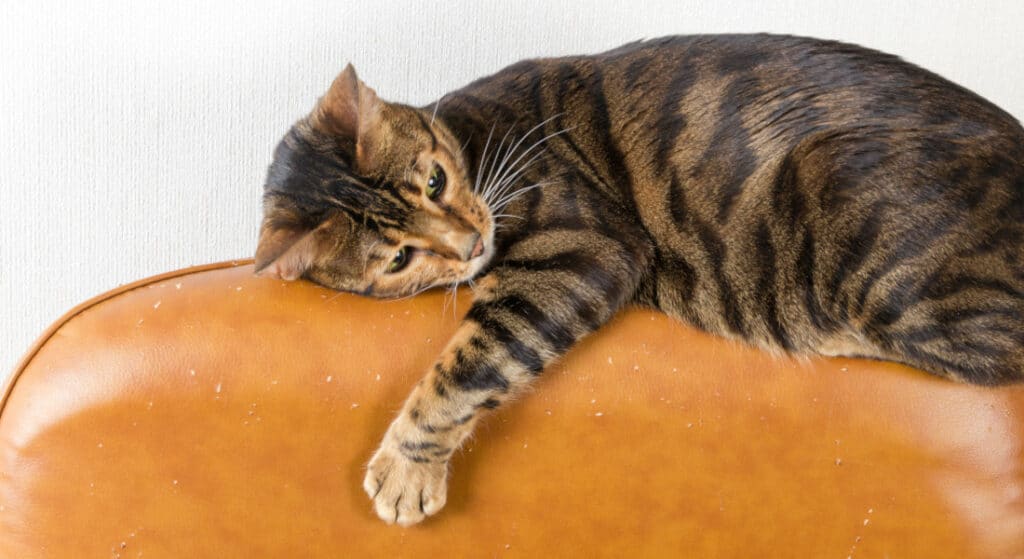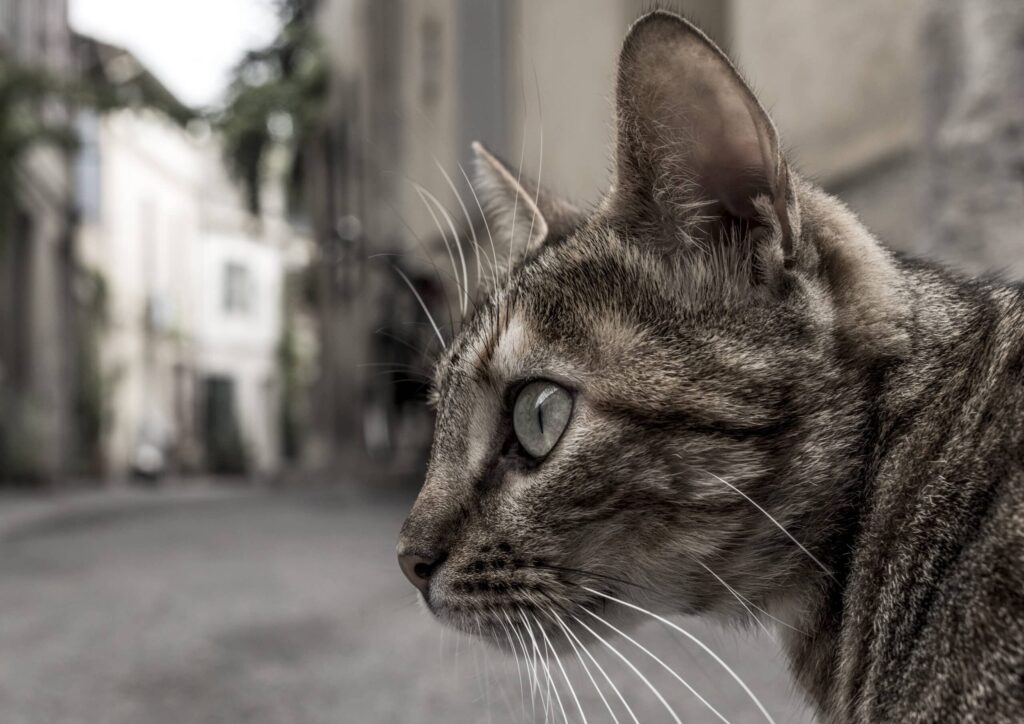
Stop a Cat’s Destructive Scratching
Sometimes, feline behavior challenges even the most patient cat owner. From shredded furniture to ruined drapes, a cat’s destructive scratching is frustrating.
Many cat owners quickly become frustrated when a cat doesn’t stop scratching furniture, drapes, or other valuable items. And once the habit sets in, stopping a cat’s destructive scratching is challenging.
The solution to this problem is to understand…
- Why cats engage in destructive scratching
- How to address it
- Common treatments
Let’s dig into this perplexing phenomenon by starting at the beginning and discovering why cats scratch.
Why Do Cats Scratch?
Scratching is a natural and instinctual behavior for cats. Here are some reasons why they do it…
- Marking Territory:
Cats have scent glands in their paws, and when they scratch, they leave behind both a visual mark (the scratches themselves) and a scent mark. This helps them establish their territory. - Stretching and Exercise:
Scratching provides cats with an excellent way to stretch their muscles, particularly in the shoulders and back, and exercise their claws. - Stress Relief:
Cats may scratch as a way to relieve stress or anxiety. It can be a comforting activity. - Maintenance:
Scratching helps cats shed the outer layers of their claws, keeping them healthy and sharp. - Communication:
Cats might scratch to communicate with other cats, signal their presence, or express their emotions.
Understanding why cats need to scratch allows us to understand how this instinctive behavior can develop into an obsession. And that provides clues as to how to stop a cat’s destructive scratching.

How to Stop Destructive Scratching
The underlying reasons behind scratching provide insights into strategies that help us manage the symptoms of destructive scratching. In particular…
- Provide Scratching Posts:
Cats need an outlet for their scratching instincts. Offer various scratching posts made from different materials, like sisal, cardboard, or carpet. Place them strategically around your home. - Positive Reinforcement:
Encourage your cat to use the scratching posts by praising and rewarding them when they do. You can use treats or affection to reinforce the behavior. - Deter Unwanted Scratching:
Use deterrents like double-sided tape, aluminum foil, or commercial sprays that smell unpleasant to cats to protect your furniture. Place these on areas your cat likes to scratch. - Trim Their Claws:
Regularly trim your cat’s claws to reduce the damage they can cause during scratching. Be careful not to cut too close to the quick. - Provide Mental Stimulation:
Cats may scratch out of boredom. Engage them in interactive play with toys and puzzles to stimulate them mentally.
These tactics provide alternatives to destructive scratching but may not be effective if an underlying medical condition is driving the behavior.
Treatments for Destructive Scratching
If your cat’s destructive scratching continues despite your efforts, it may be time to explore medical interventions and treatments.
- Scratching Caps or Covers:
Your veterinarian may attach soft caps onto your cat’s claws that prevent them from causing damage while still allowing natural scratching behavior. - Behavioral Therapy:
Consult with a professional animal behaviorist or veterinarian to address underlying issues like anxiety or stress that may trigger excessive scratching. - Medications:
In severe cases, your vet may prescribe medications to alleviate anxiety or compulsive behavior contributing to destructive scratching.
Natural Alternatives to Conventional Medicine
For those who prefer natural remedies, there are several options to consider…
- Feliway Spray:
This synthetic feline facial pheromone can help calm cats and reduce the urge to scratch. - Herbal Remedies:
Some herbs like catnip, valerian, or chamomile can have soothing effects on cats and may help reduce anxiety-related scratching. - Adequate Play and Exercise:
Ensure your cat gets plenty of physical and mental exercise, which can alleviate stress and redirect their energy away from destructive behaviors. - Consult a Holistic Veterinarian:
Consider seeking the advice of a holistic veterinarian who can recommend natural treatments like acupuncture or homeopathic remedies.
Summary of Ways to Stop a Cat’s Destructive Scratching
Destructive scratching can be challenging, but it’s essential to approach it with patience and understanding. Provide appropriate outlets for your cat’s scratching instincts, use positive reinforcement, and consider natural alternatives.
These strategies help your feline friend reduce destructive scratching and create a harmonious living environment for both of you.
Each cat is unique, so finding the right solution for your situation may involve some trial and error. Allow the both of you plenty of time to test each tactic until you find the right mix that works for you and your cat.












